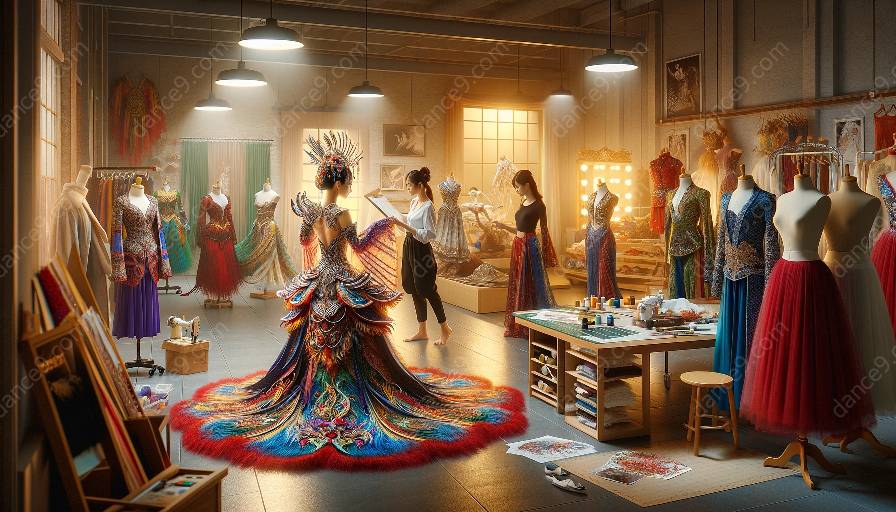Introduction
Dance costume design is an integral part of the performance and plays a significant role in conveying the social and political implications inherent in a dance production. The choice of costume design reflects cultural influences and historical contexts, which, in turn, can shape and amplify the message of the dance performance.
Cultural Significance
The design of dance costumes often draws from traditional cultural elements, such as clothing styles, colors, and patterns. These elements can symbolize a particular community or heritage. For instance, in the context of traditional dance forms like Bharatanatyam from India or Flamenco from Spain, the costumes not only reflect the cultural traditions but also serve as a means of preserving and showcasing the cultural heritage to the audience.
Historical Context
Furthermore, the historical context of a particular dance form can also be depicted through costume design. For example, the attire worn by dancers in a historical reenactment of a traditional folk dance may represent the clothing worn by people during that era, providing the audience with a visual representation of historical periods.
Symbolism and Representation
Costume design can be used to convey subtle messages and representations. The choice of colors, fabric, and embellishments can signify various aspects, such as status, emotions, or societal roles within the performance. Moreover, the portrayal of gender, power dynamics, and identity can also be reflected through the design of the costumes.
Contemporary Interpretations
In contemporary dance, costume design plays a pivotal role in exploring and challenging societal norms and political ideologies. Costume designers may experiment with unconventional materials, silhouettes, and designs to challenge existing perceptions and push boundaries. This innovative approach to costume design in dance reflects the evolving social and political landscape and fosters dialogue and reflection.
Educational Impact
Dance costume design provides an opportunity for educational exploration. Through the study of costume design in dance, individuals can gain a deeper understanding of the social and political aspects of different cultures and historical periods. It encourages cultural exchange and appreciation, fostering a sense of empathy and understanding among diverse communities.
Conclusion
In conclusion, the social and political implications of dance costume design are deeply intertwined with culture, history, and societal values. The significance of costume design extends beyond aesthetic appeal, serving as a powerful medium for communicating and interpreting social and political messages. By delving into the complexities of dance costume design, we gain insight into the diverse and nuanced factors that shape our understanding of society and its dynamics.











































